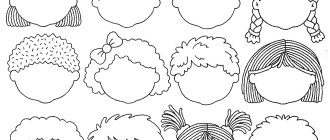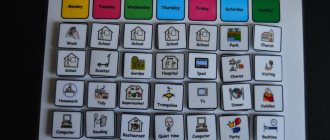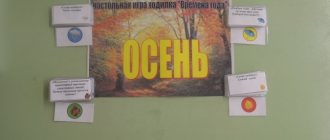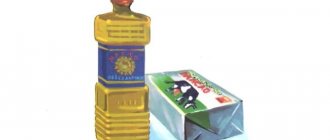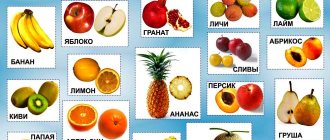General information and definitions
Physiognomy is the art of reading a person by his external signs, in particular by his face, his expression, features and facial expressions.
You can determine both internal qualities and some psychological data, as well as health status. This method cannot be called completely scientific, but many are very seriously interested in it due to its certain validity. Facial expressions are facial expressions in which a person reveals his inner sensations, experiences, feelings, mood, emotions and other spiritual qualities.
Gestures are body movements, most often with the hand/hands, that accompany or replace the words of the individual performing them.
Posture is the position of the body. A person sits, stands or lies the way he likes/convenient/comfortable.
Gestures, postures, facial expressions - all this plays an important role in people's lives. Not a single person can live without them, and therefore, if you learn to recognize them correctly, life will become easier and more interesting. Facial expressions and gestures in communication are used everywhere and automatically; not everyone is able to control them. Thanks to this, more observant and attentive individuals have the opportunity to study people.
Black smiley:
There are people who love black and white emoticons. Some people generally love pictures that depict a black heart. As they say, there is no comrade according to taste. Lastly, we decided to select all the emoticons in a black version with different moods.
Black and white faces are generally a separate category that is used for coloring. They can be downloaded. These are also high-quality photos, or rather pictures that are suitable for printing, and then you can color them to your taste and color.
What children need to know about emotions
By the senior preschool age, the child has already formed an idea of human emotions, which include:
- joy
- sadness
- fear
- anger
- resentment
- astonishment
Children define and name psychological states, briefly describe them, and give examples of everyday situations in which a person experiences them.
Pictures for children depicting emotions teach the child to reason, describe cause-and-effect relationships, and analyze his own life experience.
During speech therapy work, it is useful to offer preschool children topics related to people’s experiences to compose narrative stories. For example:
- Is it only humans who have feelings?
- What are positive and negative emotions?
- When am I happy and when am I sad?
Emotions can be divided into pairs with opposite meanings. For example: joy - sadness, disgust - admiration, boredom - interest, etc. Children should be able to recognize and name the feeling of the character in the picture, but also select antonyms for the definition. Exercises in this format allow you to more firmly consolidate the characteristics of emotions.
Children should know that we can learn about a person’s psychological state both from words and by observing actions and behavior. Each emotion has a corresponding dictionary and a set:
- gestures
- facial expressions,
- actions
It is useful to have conversations with older preschoolers about how their emotional state needs to be managed, especially when it comes to negative feelings. You cannot give free rein to anger, irritation, or sadness. Express feelings only in socially acceptable ways. Children will be interested to know that in countries around the world people express feelings in different ways.
Preview:
Emotions in pictures:
It is very important for understanding life to be able to understand the feelings and emotions of other people. It was for this purpose that cards were created and various emotions were depicted on them in pictures for children.
So, what are emotions in pictures?
Each card depicts a person's emotions in pictures. It can be anger, sadness, disgust, resentment, boredom, fear, shame, surprise, admiration, joy, interest, pleasure.
Each card consists of two sides, one of which shows a picture, for example, of a smiling child. And on the other hand - a description of the depicted emotion.
Using such cards, you can start studying with a child who is already six months old. Just show your baby a large picture and name the emotion depicted on it.
With children, starting from the age of two, you can simply limit yourself to reading the emotions on the cards. Or you can organize classes in the form of a game. For example, we conduct a conversation-discussion about what emotions exist and how to identify them. And then we come up with a whole situation that happened to the pictured baby. With the same success, you can recall fairy tales or stories in which the characters experience the same emotion for a certain emotion.
For older children who are already four years old, you can use cut-out picture cards depicting emotions. It's something like a puzzle. Each face consists of three parts, differing in size. The child’s task is to connect them correctly with each other and get a certain facial expression. But this is not so easy to do! After all, each face is characterized by certain curves of the eyebrows, lips, and nose shape. And after the child successfully copes with the task assigned to him, you can discuss this or that emotion.
How to read a face
Gradually, entire treatises were created by Chinese experts in this field.
, which actively spread throughout the eastern countries. They settled densely, including in Japan. However, it cannot be said that today the Japanese are infatuated with the art of reading faces, but its influence is clearly visible in theatrical performances, in painting, in the creation of masks and other areas.
Physiognomy experts say that our face is a unique map of the past , present and future.
True masters will never confuse someone whom no one loves with a person who is dearly loved, an immoral person with a person of high moral values, etc. The information that is written on our face is created so that others can see it.
In the modern world there are several schools on the art of reading faces.
, each of which is based on its own analysis system. Decoding the content of each position, and especially their combinations, is a complex process. Conclusions about a particular person can be made only after analyzing all the data.
Face and facial expressions
What tells you best about a person?
Of course, the face. It is this that is capable of giving away a person when he experiences some emotions, reacts to something, lies or tells the truth, etc. The language of facial expressions is rich and varied. It can be difficult to remember absolutely everything, but elementary features of sincere joy, for example, or disappointment can be retained in memory. And also learn to hide your own feelings. Despite the fact that human facial expressions and gestures are closely interrelated, they will be considered separately. So, let's go.
Games with pictograms
Games with pictograms are a whole area in the work of speech therapists and psychologists. Schematic images of emotions (faces) are excellent material for stimulating a child’s speech activity. Here are some examples of using such images:
Pick and name
Prepare pictures of pictograms with different emotions and feelings for children. The task is to find out this or that state, give it a name, and then come up with a situation in which it would be appropriate. Children can use both their personal experience and remember the heroes of famous fairy tales and cartoons. It’s okay if at first the descriptions of emotions sound childish, gradually regular speech training will help these stories become more perfect.
Face and character
Lower zone - from the beginning of the upper lip to the end of the chin
If a person has this zone wide, fleshy and strong
, and also if it is the longest, then this speaks of his prosperity and success in life. If at the same time the nodules are also developed, then the person is very determined and strong. He is quite vain, he likes to be in power, in a team he always strives for leadership, he is used to always getting what he wants.
If a person has a rather long and pointed chin
, then such a person often needs to reconsider his vision of life and learn to make contact with others. These people should take a deeper look at philosophy, science, and the humanities. There they will be able to find deeper knowledge.
If a person’s lower zone is wide and long
, which means that for its owner, physical qualities come first. If it is narrow, then the person is more interested in the inner world than in physical characteristics.
In love relationships, he is characterized by a vivid imagination. A narrow jaw also indicates that the person is conflict-free. He solves all problems through compromise, does not try to subjugate people, and also does not accept authoritarian power over himself.
If your chin protrudes
, then this speaks of perseverance, the ability to overcome difficulties, and confidence in one’s abilities.
If the chin is “sloping”
, then this indicates the presence of an extremely cautious character. Such a person will avoid conflicts and any difficulties in life by any means.
If a person has a dimple on his chin
, then this primarily speaks of his self-confidence. But sometimes this confidence reaches the point of egocentrism and narcissism. There is also an opinion that a dimple on the chin indicates that a person is very indifferent to individuals of the opposite sex.
Using the lower zone, a physiognomist will evaluate a person’s life in the period 51-77 years and older.
The correct proportions in this zone indicate that the character of its owner is very balanced.
Each of the three zones has its own characteristics and characteristics, each of them has its own signals and its own significance for our emotional life. The ability to read a face is not only an analysis of its shape and zones. In order to get a more complete picture, it is important to analyze the nose, lips, eyes and eyebrows.
This, of course, will require special literature, but we will share the main points with you.
The meaning of face shape
There are several main types of faces, and each of them can tell something very interesting about a person's personality.
Oval face shape
The “bearer” of an oval face is a person of inspiration and impulsive impulse.
He is quite well developed intellectually, quickly grasps any information and is a capable student.
But such a person often simply burns out in the business he is involved in. See also: Crafts from sticks
Such a person has difficulty controlling himself
, if you need to make him an effective worker, then without an individual approach things will go badly.
These individuals are very creative, they make excellent people in the arts, as well as other creative activities. Among the shortcomings of such a person, we note the lack of perseverance and the required degree of practicality. He can easily quit a job he has started without bringing it to its logical conclusion.
Round face shape
Such a person is impulsive
, is very energetic and likes to take the initiative. The craziest optimists of all. These individuals are very noble, have a lively mind, generosity and quick reaction.
In most cases, a person begins to act too quickly in any matter
, but often he does not think everything through, does not analyze possible failures and risks, but he is always full of goals and ideas.
Among the negative characteristics of such people, we note a craving for unjustified risks and hindsight.
Chubby people are often quite vain and love power more than anyone else, which is why they make wonderful leaders who know how to infect everyone with success.
Trapezoid face
This man is a pragmatist to the core.
Moreover, he is a terrible conservative. Such individuals have a strictly practical mindset and a very poor imagination. They perceive any changes extremely difficult.
They have a positive and sociable disposition.
They have career aspirations and are quite ambitious. Among the shortcomings, we note excessive conservatism and self-interest.
Triangular or heart shaped face
Such a person experiences mood swings more often than usual
, he is a great intellectual, distinguished by his quick wit and excellent memory. He tries to make his desires come true, but is often extremely impractical.
He quickly loses interest and begins to get frankly bored, so he always needs a sense of purpose.
Likes to watch himself, quite sensual. Such a face is often characteristic of an overly sensual person, especially if he has a thin physique and lacks a double chin.
The stronger the skin tension on such a person’s face, the higher the level of sensuality.
More often than not, people with this face shape are unusually intelligent introverts. Such a person can be very insidious, or he can have his head in the clouds, he can be terribly jealous and may not be faithful to his loved one.
Let's also add that these people have a good sense of humor
, they are excellent speakers, extremely smart and resourceful. They have a huge amount of energy for new high goals.
These people love freedom more than others, therefore they do not tolerate all-consuming power over themselves.
They also often embellish what really is and like to criticize.
Rectangular or square face shape
This person is a leader by nature, he is always active
, active and conscientious. Their character is very strong, so they can be quite harsh and stubborn, but at the same time they are always confident in their desires, as well as in the ways to achieve them.
They say very little, but strictly to the point, although sometimes they express themselves quite harshly.
Such a person is decisive and practical, very intelligent and knows a lot. Physically he is also strong and resilient.
Such a face belongs to a pragmatic logician who can convince anyone of anything.
He has strong analytical skills, and due to his innate persistence, he never gives up halfway.
This is a stern, but at the same time rather hot-tempered person who is extremely frank both in love relationships and in a business environment.
He practically does not give in to emotions and feelings. Among the negative features, we note the excessive steadfastness of nature, as well as a certain degree of rigidity. Also, such people are stingy and selfish.
Triangular-round face shape
Such a person combines excellent commercial spirit and developed intelligence, but he lacks prudence. He is an optimist and inventor in life, but he is often overwhelmed by complacency and self-confidence.
Triangular-square face shape
This person is quick-witted, quite impulsive and interested in different areas of life. He knows how to implement ideas and generate income from it.
Square-round face shape
Such individuals have a carefree and cheerful disposition. They are very active and very businesslike. Quite a headstrong and selfish person.
Long face shape
Such a face speaks of a person who is destined to be successful in life.
A long face can often be found among people in power or among aristocrats. These are quite energetic personalities and strong people, while their life position seems to scream that they deserve the best.
The meaning of facial profiles
There are three types of profiles: convex, straight and concave.
Those with the first profile are great enthusiasts, but they find it quite difficult to concentrate. They are irritated more often than others, but they are very active, love to talk, but do not like to listen.
The owner
of the straight profile is quite self-confident and stubborn
, but can be reasonable and calm. He is constantly in search of something better for himself, and rarely loses. He knows how to find the essence of things thanks to his inquisitive mind.If a person’s profile
is concave, then this indicates his isolation and gloominess
, but he has a good memory and is quite loyal to people. It often happens that such people seem to be very thoughtful, but in fact, for the most part, they are people with a shallow mind, superficial, whose heads are occupied with all sorts of trifles.
If the frontal part of the profile protrudes,
then you see an enterprising person, an active person who positively perceives the world around him. Such a person has a good creativity, but his memory is very bad; it is difficult for him to remember something.
If the nose of the profile protrudes,
then you see a true skeptic who believes practically nothing and comes to any conclusions on his own.
If the oral part of the profile protrudes,
then you see a person for whom the first priority is getting satisfaction from what he does. This condition applies to both work and rest.
A person with a pointed profile
, notices all the details, he is very insightful. Such people are smart, have excellent analytical skills, and also quickly adapt to everything new.
If a person has a rounded profile,
then this indicates that he thinks rather slowly, he needs more time to scroll through the information received in his head. He also takes quite a long time to make decisions, but he does it confidently and firmly.
Reactions
Human facial expressions manifest themselves in different ways, and most often they can be seen in human emotions. The latter, in turn, are shown in reactions. Depending on their manifestation, you can find out what a person experiences from the information received. The difficulty is that some are afraid, others don’t want to, and still others are embarrassed to show their own emotions. Because of this, you will have to have time to notice the quick, involuntary reaction that appears very first.
It is often almost impossible to completely control it, especially for an unprepared person. Therefore, you can determine the real feelings of your interlocutor, which he will most likely remove from his face in seconds, if you act quickly and extremely carefully.
Heart emoticon:
As we all already know that the heart is a symbol of love. Heart emoji can convey your feelings of admiration or surprise. Such interesting and funny faces can be easily sent to VK. Any person, even without a significant other, will be pleased to receive a symbol of love and fidelity.
Emotions
So let's continue. As mentioned just above, facial expressions in communication are manifested through the expression of emotions emanating from a reaction. Below are the most striking and significant of them, as well as ways of expressing them:
- Joy happiness. The eyebrows and lips are relaxed, the corners of the latter are raised on both sides, the cheeks are also raised, and there are small wrinkles in the corners of the eyes.
- Anger, irritation. The eyebrows are tense, brought together and lowered, the mouth is tightly closed. Often the teeth are brought together, as are the lips, the corners of which look down during anger or strong dissatisfaction.
- Contempt. Smirk. The corner of the mouth is raised on one side and a slight squint is visible in the eyes.
- Astonishment. The lips and face are generally relaxed, the eyes are rounder than usual, the eyebrows are raised up, and the mouth is slightly open.
- Fear. The eyebrows and upper eyelids are raised, and the lower ones are tense, like the whole face as a whole, the eyes are wide open.
- Sadness, disappointment. Slightly lowered upper eyelids and raised eyebrows, relaxed lips with corners looking down, as well as an empty, dull look.
- Disgust. The upper lip is tense and raised, the eyebrows are brought together, forming a small fold, and slightly lowered, the cheeks are also slightly raised, and the nose is slightly wrinkled.
See also: Didactic material on mathematics. Number "6"
Among other things, pictures will help you deal with emotions. The facial expressions on them are depicted well, which clearly demonstrates the inner feelings and experiences of the people depicted. Smiles, by the way, were also not invented in vain. Their facial expressions are often quite good, which is why they are in demand when trying to convey emotions via the Internet. After all, communication here mainly takes place in letters, which are not always able to convey the sensations experienced at one time or another.
Touchy look with eyebrows.
Positive emotion emoticon.
Wink with one eye.
The girl became embarrassed.
Good mood.
Dreamy yellow smiley face.
A smile from all teeth.
Drawn pictures
Emotions in pictures for children, used for classes on speech development, are presented in several versions: images of adults and children, people or fairy-tale characters. Printed pictures and drawings created by children are suitable for the development of speech in preschoolers.
Invite the children to draw themselves or another person experiencing a certain feeling. Drawing up a verbal explanation for such a picture is a speech therapy exercise that the children do willingly.
If children are not yet able to cope with independent depictions of emotional states, it is worth inviting them to create a collage from pre-prepared and printed facial details. Preschoolers aged 6-7 years are able to recreate emotions on paper on their own, but for younger children it is worth using ready-made templates and samples.
In speech therapy work, you can use not only drawing, but also coloring. Thematic coloring books are a useful and exciting material that is indispensable for girls and boys in kindergarten and at home.
It is important to first thoroughly study with children not only the names of different emotions, but also those artistic techniques that allow you to accurately convey one or another psychological state of a person. The use of pictograms can be very helpful in this regard.
Physiognomy of facial expressions, smiles, gaze in pictures
In physiognomy, the corners of the lips pulled back in a smile and facial wrinkles near the eyes are joy
Surprise in physiognomy is wide open eyes, raised eyebrows, facial wrinkles on the forehead and an open mouth
Interest in physiognomy is when the eyebrows are slightly raised and the eyes are widened
Disgust is a facial expression that in physiognomy is expressed by pouting lips, furrowed eyebrows, and a wrinkled nose.
According to physiognomy, sadness and grief can be recognized by the downturned corners of the lips and dull gaze
In physiognomy, contempt is a raised eyebrow and head, as if a person is looking down at an opponent. In physiognomy, fear is an open mouth, raised eyebrows and wide open eyes
In physiognomy, anger is knitted eyebrows, widening of the wings of the nose, and often exposure of teeth
Shame in physiognomy is a lowered gaze and often a lowered head, redness of the face
In physiognomy, a relaxed smile, in which teeth and not gums are visible, speaks of harmony of feelings
In physiognomy, a smile with exposed gums is a signal that a person does not believe that they can love him just like that
In physiognomy, a smile with the upper lip stretched over the teeth is a signal of insincerity, a desire to hide feelings
In physiognomy, a crooked smile is considered a smile for show, appearing more out of necessity.
In physiognomy, a smile with lips closed as if for a kiss speaks of a person’s desire to keep a distance
Physiognomists call an unrestrained smile one in which both rows of teeth are exposed and facial wrinkles appear.
Physiognomists call slightly stretched lips, which are not tense, a dreamy smile.
The look from below speaks in physiognomy of respect for the interlocutor
A top-down look at physiognomy - disdain, criticism of the opponent
Looking to the side according to physiognomy - impatience
A narrowed gaze in physiognomy means bad intentions
A glance from under the brows according to physiognomy is a sign of submission
A piercing direct gaze in physiognomy is a sign of self-confidence
Physiognomy: external signs of anger and envy
One of the signs of envy is a tight smile. A person tries to hide his bad feeling by smiling diligently - this is the first reaction designed to mask true emotions. As a result, the lips are tense and a “glued” effect is created.
IMPORTANT: You will never confuse a fake smile with a sincere smile. In the first case, folds will form around the eyes, and the eyes themselves will seem to glow.
A tense smile is the first sign of physiognomy, indicating envy.
Another sign relating to the mouth is a grin. It may be subtle, but it will be difficult for a skeptical person to resist it.
A grin is another sign in physiognomy that denotes envy.
Now pay attention to the eyes - they squint in moments of envy . The person continues to follow the interlocutor, but at the same time intuitively strives to hide his true emotions.
Squinted eyes are a sign of envy according to physiognomy
Look at hands - the envious one often has them near his mouth. This gesture comes from childhood, when we covered our mouths when telling a lie.
IMPORTANT: A person can also rest his chin on his fist, while pointing his index finger upward. This is the so-called “assessment posture”, the result of skepticism towards the object of envy.
Hands to the mouth in physiognomy are a sign of envy.
Physiognomic signs of anger are:
- Frown eyebrows forming folds at the bridge of the nose
- Swollen nose wings
- The corners of the lips are tense and often pulled down. Teeth bared. The mouth can be either open or tightly closed
Physiognomic signs of anger on the face
Kiss emoticon:
If you can't kiss your significant other at the moment, you can do it from a distance. You can send a kiss or a lovely heart emoji. This will strengthen your relationship and give greater commitment and trust!
Colored faces smiling and with hearts. Having fun and surprise.
